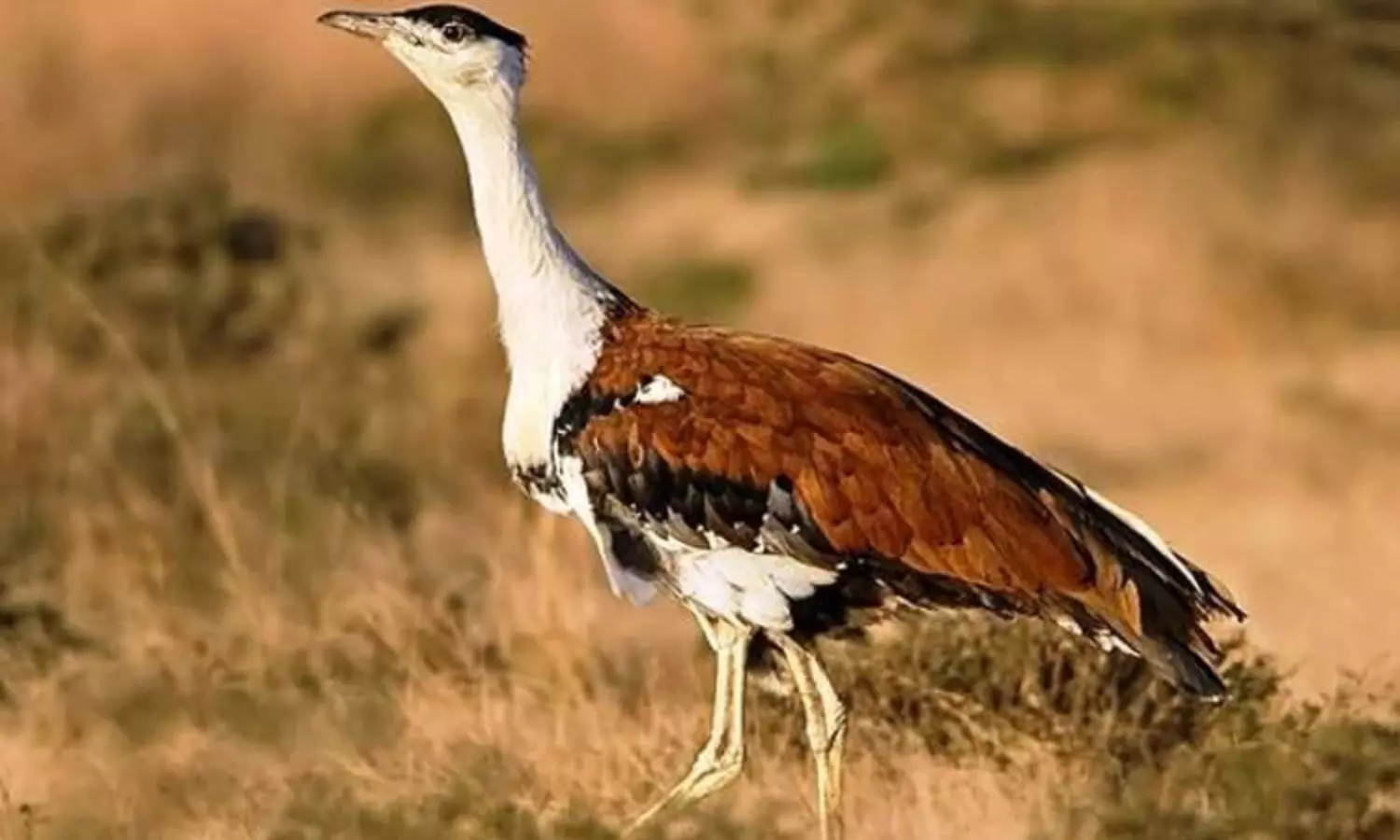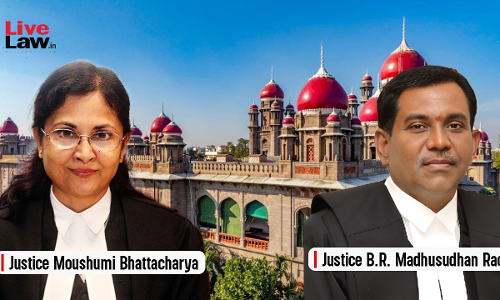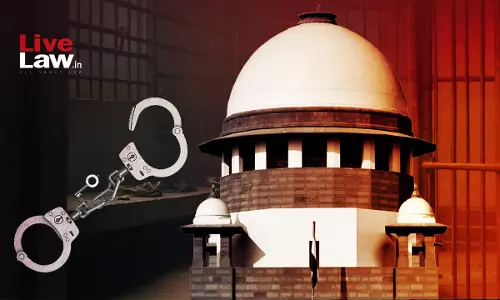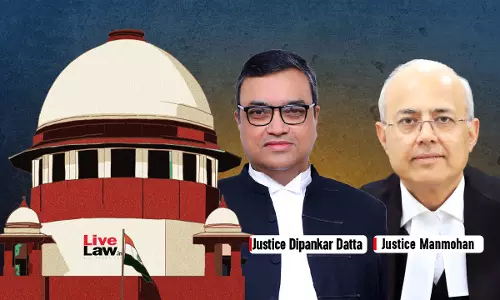Protection Of Great Indian Bustard: Supreme Court Relooks Earlier Directions On Undergrounding Powerlines, Forms Expert Committee

The Supreme Court on Thursday (March 21) constituted an expert committee to examine the scope, feasibility and extent of installing overhead and underground powerlines in areas considered 'Priority' for the conservation of the Great Indian Bustard (GIB). The directions of the court come as a consequence of the need to strike a balance between the protection of the GIB and India's...
The Supreme Court on Thursday (March 21) constituted an expert committee to examine the scope, feasibility and extent of installing overhead and underground powerlines in areas considered 'Priority' for the conservation of the Great Indian Bustard (GIB). The directions of the court come as a consequence of the need to strike a balance between the protection of the GIB and India's global commitment towards green energy measures.
The bench led by CJI DY Chandrachud was of the considered view that the Court's previous order dated 19 April 2021 ordering blanket directions for the undergrounding of high voltage and low voltage power lines required recalibration. As such a task, CJI observed would be best left to the domain experts. "Instead of a prior adjudication by the Court".
In light of the same, after taking suggestions from the counsels representing relevant stakeholders in the matter, the Court directed the constitution of an expert committee consisting :
1. Director, Wildlife Institute of India, Dehradun
2. Dr. Hari Shankar Singh, Member, National Board for Wildlife
3. Mr Narendra Kumar Vasu, Ex-Principle Chief Conservator of Forests
4. Mr B Majumdar, Former Chief Wildlife Warden and Principle Chief Conservator of Forest, Maharashtra
5. Dr Dinesh Gadwi
6. Mr Lalit Bohra, Joint Secretary (Green Energy Corridor) (Ministry of Renewable Energy)
7. Joint Secretary in the Ministry of Environment, Forest and Climate Change
The court additionally directed the following persons to be special invitees in light of efficient facilitation of setting up the powerline of transmission lines of solar power energy -
1. Mr Ashok Kumar Rajput , Member, Power Systems, Central Electricity Authority;
2. Mr PC Garg, The Chief Operating Officer, Central Transmission Utility Of India Ltd.
The Court further specified that the remit of the committee includes (1) determining the scope, feasibility and extent of overhead and underground electric lines in the area identified as a priority area in the reports of Wildlife Institute of India in the states of Rajasthan and Gujarat ; (2) Determination of the need for adopting conservation and protection measures for the GIB and other fauna in relation to the topography and desert features ; (3) Identification of the measures to be adopted in the priority areas to ensure the longevity of survival of the GIB; (4) Identifying suitable alternatives in the context of sustainable development in the issue of laying future power lines which will balance the conservation of the GIB along with India's international commitments for generating renewable energy.
The Court also relaxed the earlier injunction granted in the order of April 19 2021 concerning the area described as the potential area subject to the condition the above expert committee shall lay down reasonable parameters covering priority and potential areas. The expert committee is additionally granted powers to make suitable recommendations for the installation of bird diverters and suggest any other areas which could used for the conservation of the GIB. The expert committee is required to submit it's report to Court on or before July 31, 2024.
It may be recalled that the April 19 2021 Order directed the following :
"In all cases where the overhead powerlines exist as on today in the priority and potential GIB area ,the respondents shall take steps forthwith to install divertors pending consideration of the conversion of the overhead cables into underground power lines. In all such cases where it is found feasible to convert the overhead cables into underground power lines, the same shall be undertaken and completed within a period of one year and till such time the diverters shall be hung from the existing powerlines"
Senior Advocate Mr Shyam Divan appearing for the petitioners (seeking protection of the GIB) requested the bench to appoint a retired Supreme Court Judge such as Justice Deepak Gupta or Justice Nageswar Rao as the chairman of the said expert committee, considering the knowledge and experience such individuals have in dealing with environmental disputes.
"I am suggesting let's have a chair who is a retired Justice of this Court he will look at it..its a species, how can we have an objection to that? if someone neutral, someone authoritative tells us, the message is that we have given this bird, this species is our best shot, that is why I suggested someone sensitive like Justice Deepak Gupta who has sat on the green bench, someone like Justice Nageswar Rao who have vast knowledge ..."
The CJI replied that the court would take a call on the same after viewing the report of the expert committee in July.
Union's Updated Status Report
The Union in its affidavit filed, submitted that the prior directions of the Court to lay underground voltage power lines would be impractical to implement. It further stressed the need for balancing the present issue of protection of the GIB with India's International commitment to reduce carbon footprint, in doing so the installation of solar panels is a crucial step in that direction. the Union was represented by Attorney General Mr R Venkataramani and ASG Aishwarya Bhati.
The Union stressed that the blanket imposition of directions on underground lining would contribute little to the actual goal of protecting the GIB.
On the previous hearing, the Court had sought views of the Union Government on striking a balance between the need to protect the Great Indian Bustard, an endangered bird, and India's international commitments toward lowering the carbon footprint through solar energy.
The bench comprising Chief Justice DY Chandrachud, Justices JB Pardiwala and Manoj Misra sought updated status reports from the Union and States of Rajasthan and Gujarat on the measures taken to prevent the deaths of the Bustards due to the collision with overhead transmission wires installed at solar panel projects.
Background
The Supreme Court had on 19th April 2021 passed its judgement issuing directions for the protection of the Great Indian Bustard from extinction. It had also constituted a Committee with three members, namely, a) Dr. Rahul Rawat, Scientist; b) Dr. Sutirtha Dutta, Scientist, Wildlife Institute of India, Dehradun; c) Dr. Devesh Gadhavi, Deputy Director, The Corbett Foundation.The committee was directed to prepare and file quality standards in consultation with the Central Electricity Authority for the protection of the Great Indian Bustard. Accordingly, the following directions were passed–
1. Complete installation of bird diverters in priority areas.
2. States of Rajasthan and Gujarat along with power producers to ensure that an assessment is done within priority areas to assess the total length of transmission lines along with diverters required.
To ensure that directions issued by this court are complied with, the bench issued the following further directions: 1. Chief secretaries of Rajasthan and Gujarat to assess the total length of transmission lines and the estimated number of bird diverters in priority areas required. 2. The committee shall submit an updated status report by the next date. Further, the bench left it open for the Committee to seek views of the technical experts and stated that the committee may take the expert opinion of the COO of Central Transmission Utility of India Ltd.
As a departing comment, CJI DY Chandrachud also asked the Attorney General for India R Venkatramani to take instructions from the Ministry of Forest and Environment on whether it was possible to have a 'Project Great Indian Bustard' in a manner similar to the 'Project Tiger'.
CASE TITLE: MK Ranjitsinh And Ors. v. Union of India And Ors. WP(C) No. 838/2019




